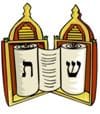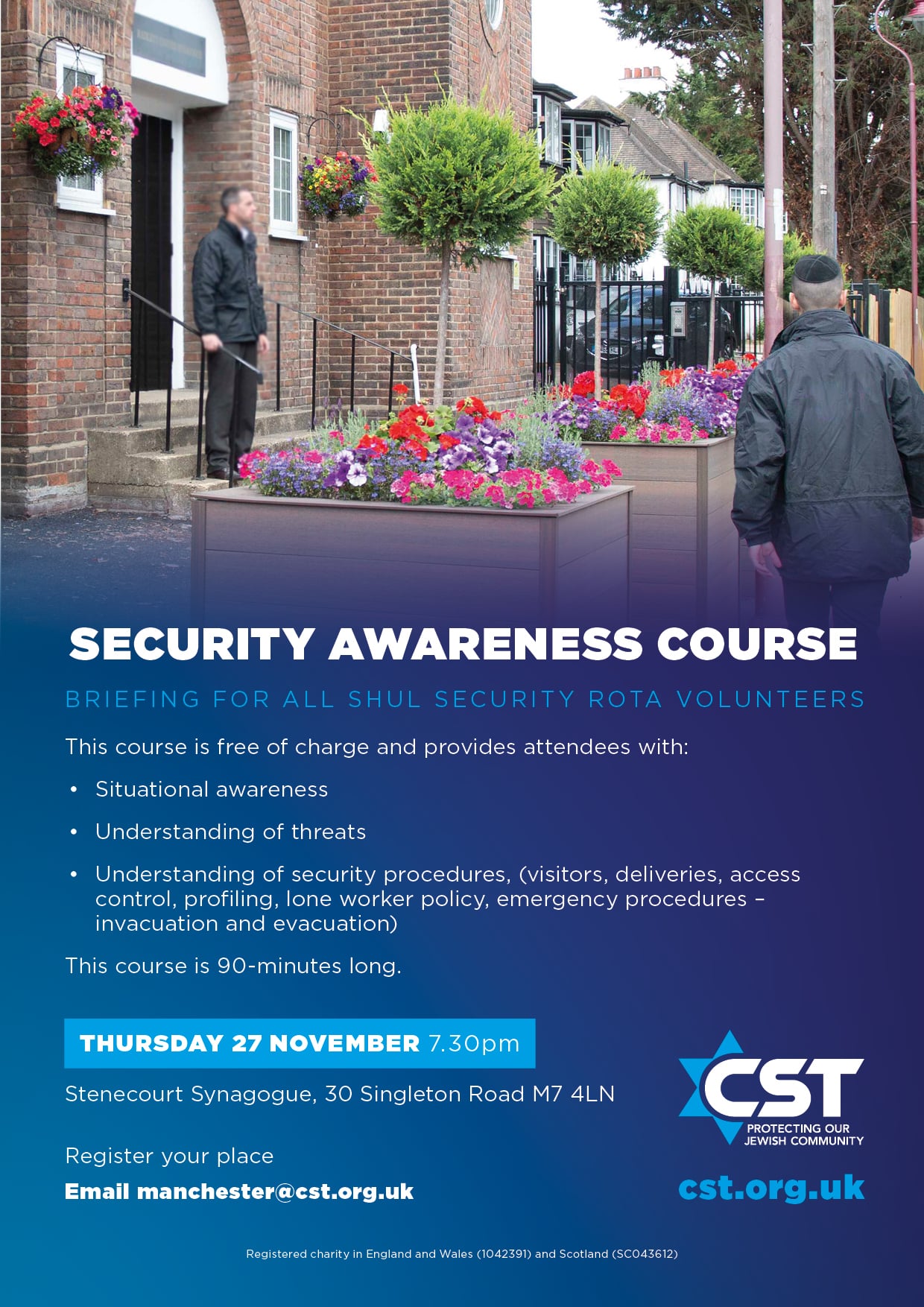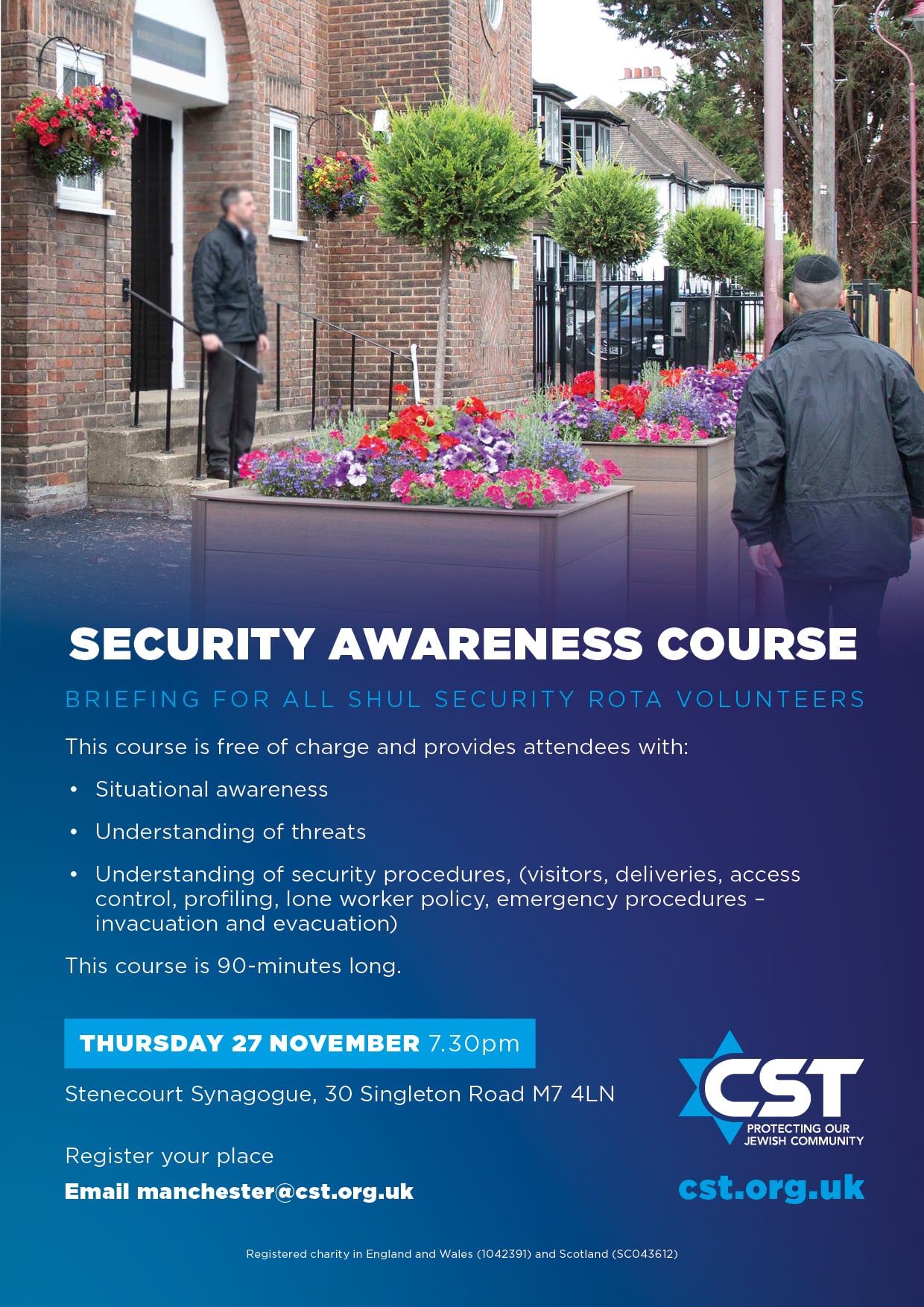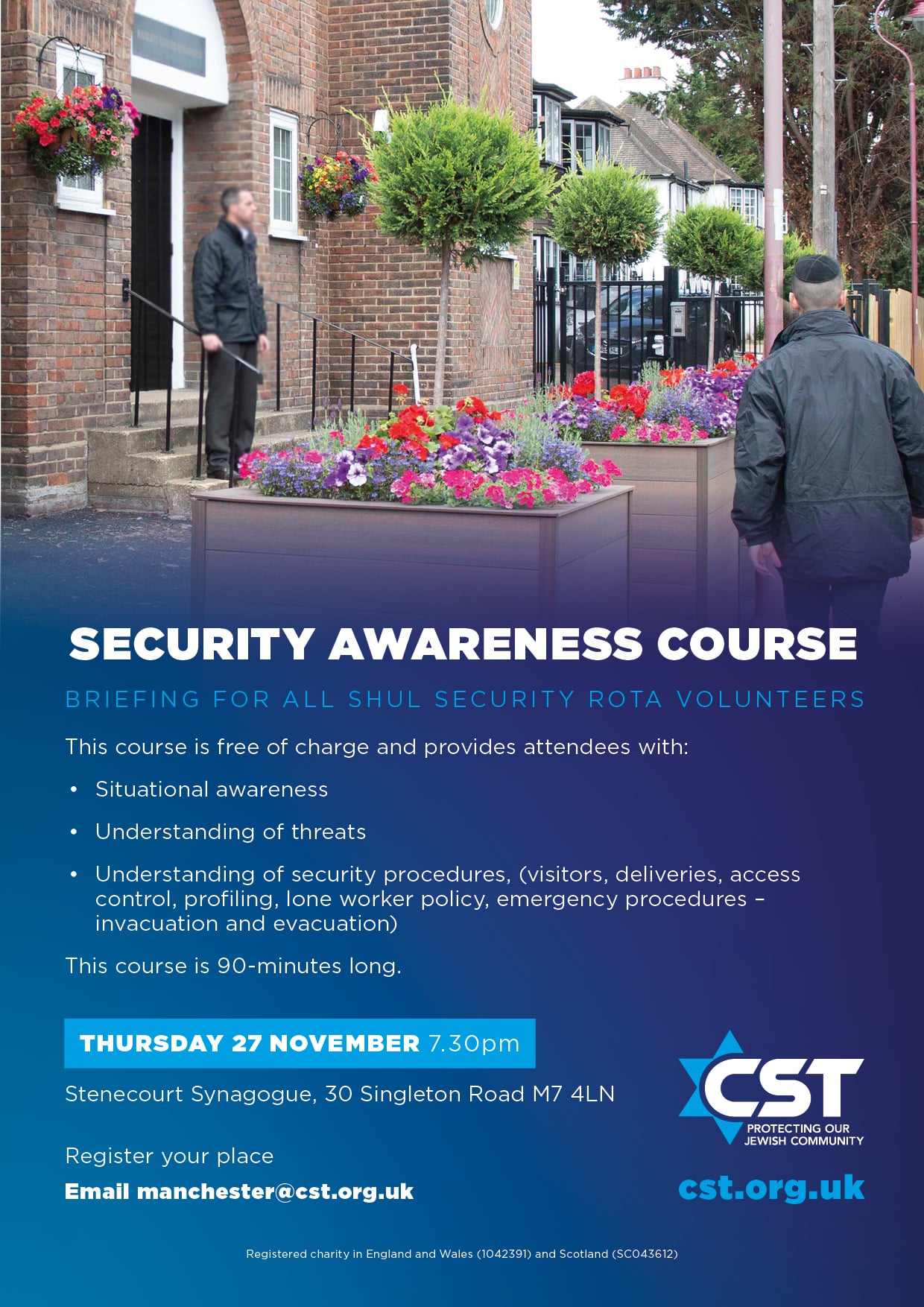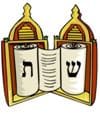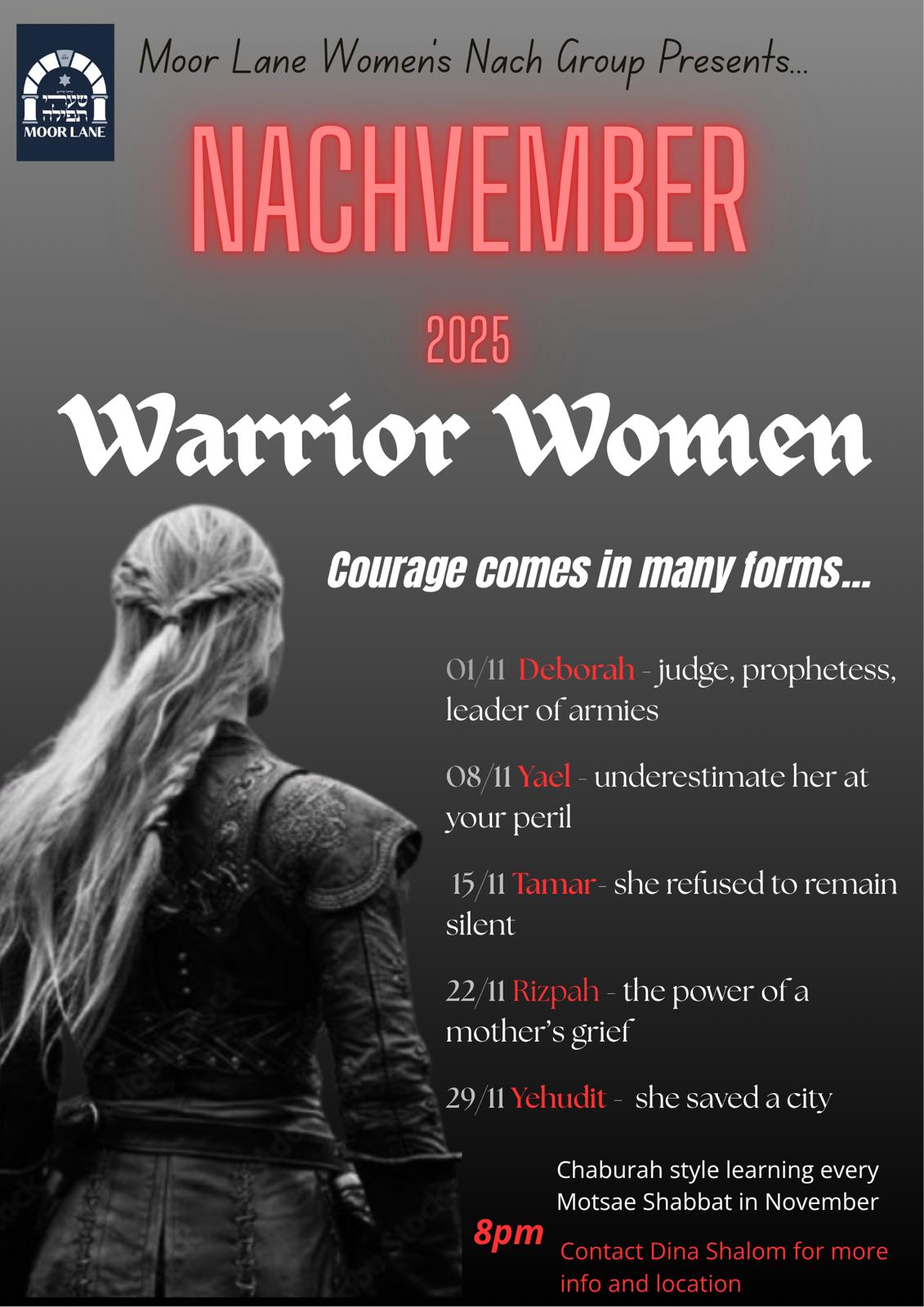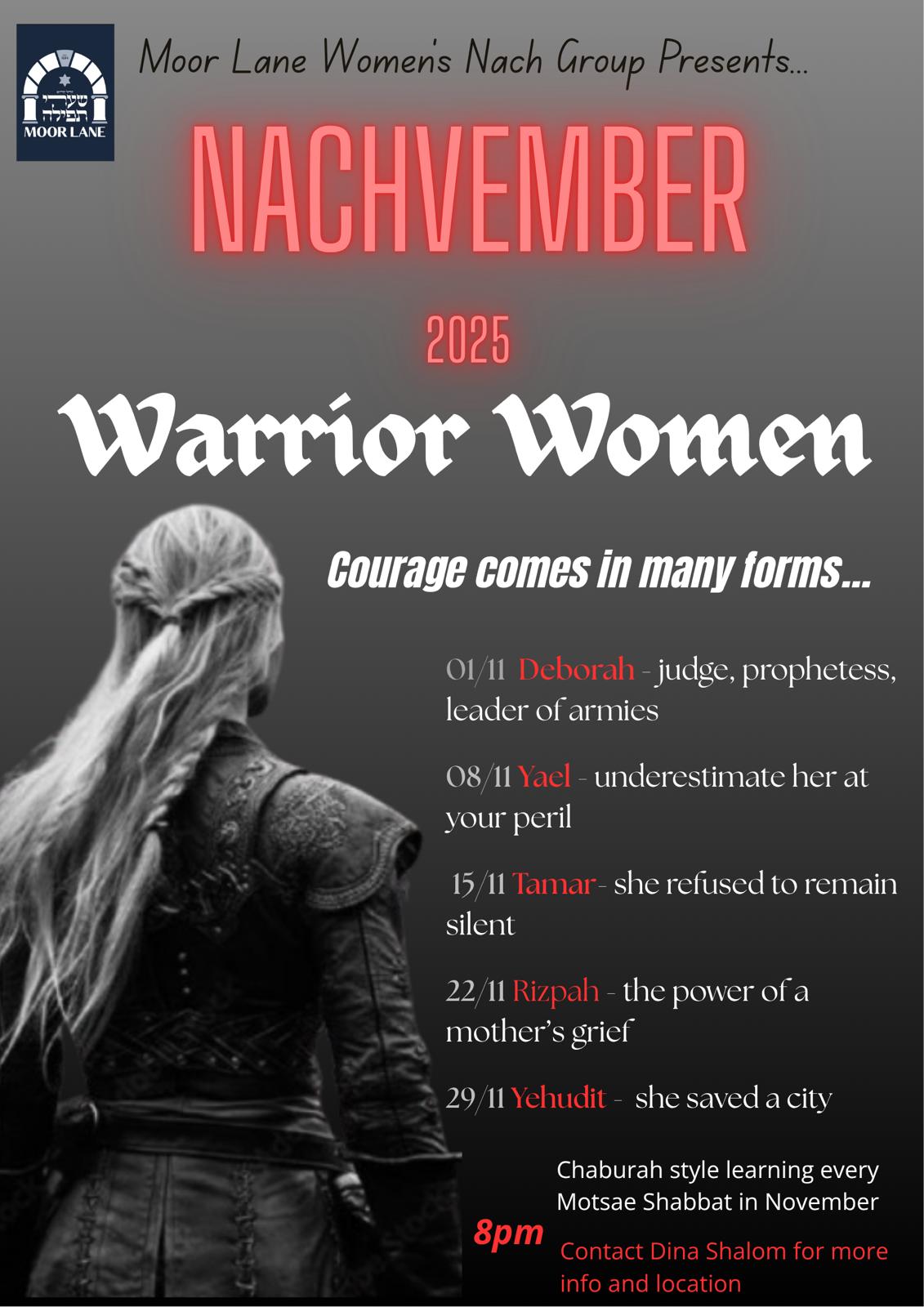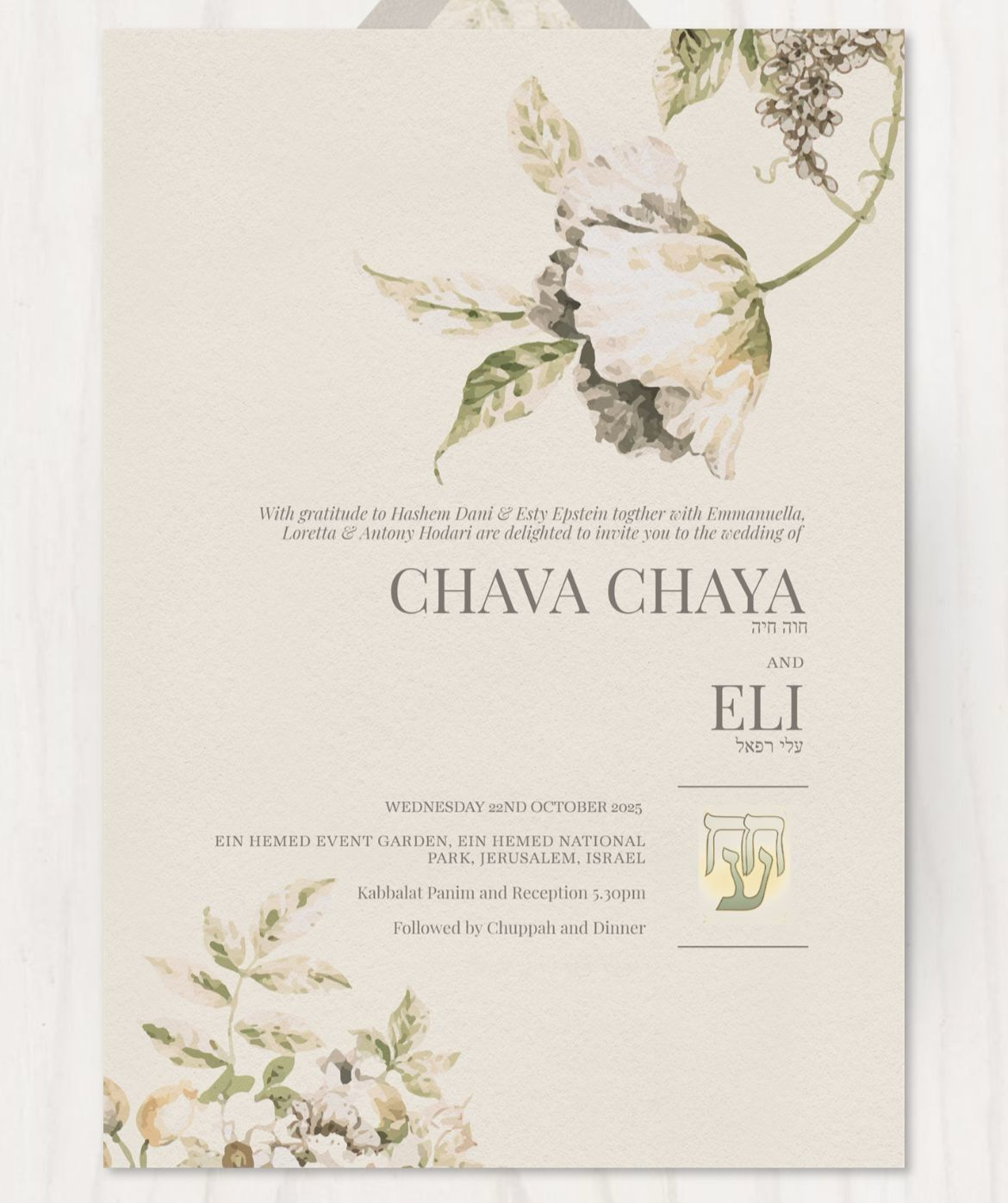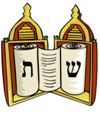


שבת מברכים
is
שבת מברכים
*****
חנוכה

begins
THIS SUNDAY NIGHT
*****

🗓️ Save the date 📝
Annual General Meeting 2026
You are requested to attend the
ANNUAL GENERAL MEETING OF THE CONGREGATION
Motzae Shabbat
10th January 2026
at 7:45 pm
AGENDA
1. Minutes of the 2025 Annual General Meeting
2. Matters arising from the Minutes
3. Parnas Presidente’s Report
4. Adoption of the Report
5. Treasurer’s Report and Presentation of Accounts
6. Discussion and Adoption of Report
7. *Election of Hon Officers and Members of the Mahamad
a) Parnas Presidente
b) Parnas Vice Presidente
c) Treasurer
d) Gabbai
e) Hon. Secretary
f) Ladies Committee Chair
g) Mahamad (6 members – sub-group duties to be defined)
8. Election of delegates to:
a) Manchester Shechita Board b) Manchester Jewish Rep Council
9. A.O.B.
CURRENT MEMBERS OF THE MAHAMAD 5785
a) Parnas Presidente: Mordechai Maman
b) Parnas Vice Presidente: Benjamin Hassan
c) Treasurer: Yehoshua Jacobs
d) Gabbai: Eli Shoshana
e) Hon. Secretary: Yehoshua Lewis
f) Ladies Committee Chair: Mrs. Elaine Marshall
g) Mahamad: Mrs Loretta Hodari
Raphi Marshall
Paul Delmonte
Thank you in advance for attending – your support for this meeting is important.
On behalf of the Mahamad
*Nominations should reach the Parnas Presidente or Vice Presidente before Thursday, 8th January 2026.
YOU ARE RESPECTFULLY REMINDED THAT UNDER THE PROVISION OF ASCAMA 28 YEHIDIM BEING ARREARS IN THE PAYMENT OF THEIR ACCOUNT FOR A LONGER PERIOD THAN SIX MONTHS SHALL FORFEIT THE RIGHT OF VOTING AT ALL MEETINGS
PLEASE NOTE: VOTING IS BY ATTENDANCE ONLY – PROXY VOTES ARE NOT VALID FOR AGM’s
*****


לוח זמני תפלה לחורף תשפ״ו
Winter Timetable 5786 – 2025/26
מוצאי שבת | ערבית (מוצ״ש) | שקיעה | מנחה שבת | סוף זמן קריאת שמע | הדלקת נרות | מנחה וקבלת שבת | תאריך | שבת פרשת |
Shabbat Ends | Arbit | Sunset | Minha | Shema before | Candle Lighting | Minha & Kabbalat Shabbat | Date | Parasha |
PM | PM | PM | PM | AM | PM | PM |
|
|
4:48 | 4:44 | 3:48 | 3:15 | 10:10 | 3:34 | 3:34 | 12/13 Dec | וישב (ש״מ) |
*********
🕯️WINTER TIMES FOR SHABBAT MORNING🕯️
שבת
קרבנות
8:45 am
הודו
9:00 am
*****

********
Yaakov settles in the land of Canaan. His favorite son, Yosef, brings him critical reports about his brothers. Yaakov makes Yosef a fine tunic of multi-colored woolen strips. Yosef exacerbates his brothers’ hatred by recounting prophetic dreams of sheaves of wheat bowing to his sheaf, and of the sun, moon and stars bowing to him, signifying that all his family will appoint him king. The brothers indict Yosef and resolve to execute him. When Yosef comes to Shechem, the brothers relent and decide, at Reuven’s instigation, to throw him into a pit instead. Reuven’s intent was to save Yosef. Yehuda persuades the brothers to take Yosef out of the pit and sell him to a caravan of passing Ishmaelites. Reuven returns to find the pit empty and rends his clothes. The brothers soak Yosef’s tunic in goat’s blood and show it to Yaakov, who assumes that Yosef has been devoured by a wild beast. Yaakov is inconsolable. Meanwhile, in Egypt, Yosef has been sold to Potiphar, Pharaoh’s Chamberlain of the Butchers.
In the Torah portion’s sub-plot, Yehuda’s son Er dies as punishment for preventing his wife Tamar from becoming pregnant. Onan, Yehuda’s second son, then weds Tamar by levirate marriage. He too is punished in similar circumstances. When Yehuda’s wife dies, Tamar resolves to have children through Yehuda, as this union will found the Davidic line culminating in the Mashiach.
Meanwhile, Yosef rises to power in the house of his Egyptian master. His extreme beauty attracts the unwanted advances of his master’s wife. Enraged by his rejection, she accuses Yosef of attempting to seduce her, and he is imprisoned. In prison, Yosef successfully predicts the outcome of the dream of Pharaoh’s wine steward, who is reinstated, and the dream of Pharaoh’s baker, who is hanged. In spite of his promise, the wine steward forgets to help Yosef, and Yosef languishes in prison.
Ohr Somayach Institutions www.ohr.edu

הזמן הנכון להדלקת הנרות
בתקופה שהתרחש נס חנוכה, וכן בדורות שלאחר מכן, היה מצב היהודים בארץ ישראל סביר, ולכן היו כולם מדליקים נרות חנוכה בפתחי בתיהם, מבחוץ, בצד שפונה לרשות הרבים. כדי לפרסם כמה שיותר את נס החנוכה לעיני העוברים ושבים.
אולם בדורות שלאחר מכן, חזרו הגויים לפגוע בעם ישראל בכל מקומות מושבותיהם, ולפעמים היתה סכנה של ממש בהדלקת נרות חנוכה באופן שיראו אותם מבחוץ. ועוד היו תקופות שהממשלה אסרה לגמרי על הדלקת נרות בימי החג של הגויים, שהיה חל בימי החנוכה. (רש”י בפ' במה מדליקין). ועוד, היו זמנים שהמצב לא היה גרוע כל כך, ובכל זאת, הגויים היו שוברים את הנרות ומפילים אותם ארצה. (כך מבואר במגילת תענית), כך שלמעשה לא היה ניתן להדליק נרות בפתחי הבתים. מאחר וכך היה המצב, חזרו חכמי ישראל ותיקנו, שידליקו ישראל את נרות החנוכה בבתיהם, ולא בפתחי הבתים, וכך יוכלו לקיים את המצוה, ולפרסם את הנס, על כל פנים, לעיניהם של בני הבית. וכמאמר רבותינו: “ובשעת הסכנה, מניחו על שולחנו, ודיו”.
ולכן פסק רבינו הרמב”ם, שמי שאיחר ולא הדליק נרות חנוכה במשך חצי שעה מזמן צאת הכוכבים, הוא אינו יכול להדליק נרות חנוכה באותו לילה כלל. שכך היתה מצוות חכמים. (והדברים קשורים לדרכו של הרמב”ם בפירוש דברי הגמרא, אך לא נוכל להאריך כאן בהסבר הדברים יותר).
לעומת דברי הרמב”ם, הביאו התוספות (שבת כא:), את דברי רבינו יצחק, שסבר שבזמנינו אין כלל וכלל ענין להדליק בצאת הכוכבים, וניתן אפילו לכתחילה להדליק אפילו בשעה מאוחרת. ולעומת זאת, הביאו התוספות את דעתו של רבינו יוסף פורת, שסבר שגם בזמנינו יש להדליק דוקא בצאת הכוכבים. אולם אם התאחר מסיבה של שהיא ולא הדליק בצאת הכוכבים, ואפילו אם איחר עד סוף הלילה, עדיין יש להדליק נרות חנוכה, שהרי סוף כל סוף יש פירסום לנס חנוכה גם בשעה מאוחרת, ורק לכתחילה יש לנהוג כפי תקנת חכמים.
וכדברי הרשב”א פסק מרן השלחן ערוך (סימן תערב).
ומרן זצ”ל, בצעירותו, היה אומר שיעור לפני כמאה בעלי בתים בכל יום, והשיעור היה נמשך כשלוש שעות. וידע מרן זצ”ל, שאם הוא ילך לביתו להדליק נרות, לאחר מכן כבר לא יתאספו קהל גדול כל כך לשמוע דברי תורה, לכן היה אומר את השיעור כסידרו, ולאחר מכן היו כולם הולכים לבתיהם ומדליקים נרות חנוכה בשמחה. אבל במקום שאין הכרח כזה בדבר, יש להקפיד על ההדלקה דוקא עם צאת הכוכבים כאמור.
The Proper Time to Light Chanukah Candles
Times of Danger
Before we explain the preferred time to light Chanukah candles, let us first discuss a general rule regarding Chanukah candles.
During the era during which the Chanukah miracle occurred and several generations thereafter, the situation in Israel was relatively safe for the Jewish people and therefore, people would light Chanukah candles on the outside of their front doors, facing the street, in order to maximally publicize the miracle of Chanukah to all passersby.
Several generations later, the Jewish nation began being attacked by their enemies in the various countries they resided in, such that lighting Chanukah candles outside would pose a real risk of danger to them. Furthermore, there were periods when the government banned lighting Chanukah candles altogether during their pagan holidays which coincided with Chanukah. There were other periods throughout history when, although non-Jews would not necessarily attack the Jews, they would nevertheless vandalize their Menorahs, such that it was almost impossible to light outside (see Megillat Ta’anit). The Sages then dictated that the Jewish people light Chanukah candles inside their homes, as opposed to outside their front doors, so that the Mitzvah may be performed and the miracle publicized at least to one’s immediate family. Indeed, our Sages taught, “And from the times of danger and on, one may light the candles on one’s table and this is sufficient.”
The Time to Light
When our Sages originally instituted lighting Chanukah candles, they wanted them to be lit during the time it would engender the maximum publicization of the miracle and thus, they ruled that the candles should be lit at nightfall, which is when it gets dark outside and the candles are clearly visible, and to fill the candles with enough oil that they last for at least a half-hour. This was because in those times, for the half-hour following nightfall, many pedestrians still roamed the streets, and the miracle would be publicized by being seen by passersby. However, after this time when most people were no longer walking in the streets, there would be no one to see the candles and therefore, one needed to make sure to light before this initial half-hour following nightfall had elapsed.
The Opinion of the Rambam and Other Poskim
In the following generations, it was less important to light specifically at nightfall, for in terms of the household, it does not make a difference whether one lights at 5:00 pm or 8:00 pm. However, as mentioned above, the original enactment was to light at nightfall or within the half-hour that followed.
It is for this reason that the Rambam rules that one was delayed and had not lit the Chanukah candles within the initial half-hour following nightfall may not do so anymore that night. (This ruling has much to do with how the Rambam deciphers the Gemara, but we cannot delve into that further at the moment.)
On the other hand, Tosafot (Shabbat 21b) quote Rabbeinu Yitzchak who rules that there is no longer a need to light at nightfall; one may even preferably light at a later hour. Nevertheless, Tosafot quote Rabbeinu Yosef Porat who disagrees and maintains that even nowadays, Chanukah candles should preferably be lit at nightfall, however, if one missed this time, one may light even at the end of the night, for there is ultimately publicization of the miracle even at a late hour.
The Opinion of the Rashba and Maran Ha’Shulchan Aruch
The Rashba (in his commentary on Shabbat ibid.) rules that even nowadays, one should strive to light Chanukah candles precisely at nightfall or at least within the half-hour that follows. However, if, for whatever reason, if this time has passed and one has not yet lit, one may do so all night long since the Mitzvah remains active until dawn, although the original enactment was to light at nightfall. According to the Rashba, there is no halachic distinction between our generation and the original enactment for in both cases, one must strive to light at nightfall or the half-hour that follows, however, if one has not done so, one may light all night long.
Maran Ha’Shulchan Aruch (Ch. 672) rules in accordance with the Rashba.
The Bottom Line
Therefore, one should strongly attempt to light Chanukah candles at nightfall (approximately fifteen minutes past sunset) or at least within the initial half-hour after nightfall. If, for whatever reason, one missed lighting at this time, one may light with a blessing all night long.
In his youth, Maran zt”l would deliver a nightly Torah class to over one hundred laymen for approximately three hours. He understood that if he went home to light the Chanukah candles at the proper time, there would not be as big of an audience as usual for the class. He would therefore give his class at the regular time and when he concluded, everyone went home to light Chanukah candles joyfully. However, if there is no such need, one should try one’s utmost to light specifically at nightfall, as we have discussed.







